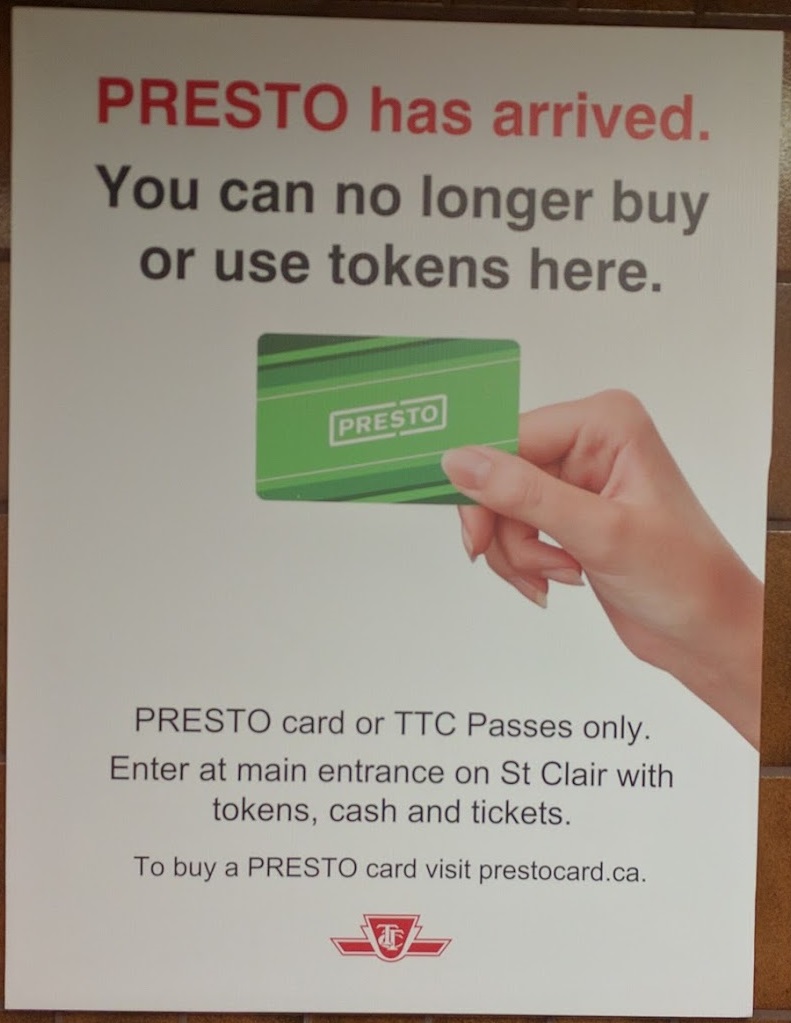You may have noticed posters placed in some TTC stations advising riders that tokens will no longer be accepted at unmanned entrances. These ads represent a new, more aggressive push for adoption of the PRESTO card that has been in deployment for several years across the GTA. While there are useful qualities to tap cards, tokens have three important features that the Province of Ontario and City of Toronto overlooked when pressuring the TTC to phase out this alternative currency that has been used since the 1950s.The primary benefits of PRESTO cards stem from their ease of use in the digital era. You can “top-up” online with a credit card. That’s fine for many TTC riders. It’s not so easy for many others. Public transit is a fundamental social pillar used by some of the most vulnerable people in our society: the poor, elderly, sick, and young. For these riders, added complexity—even small levels of added complexity—are a barrier to access. Tokens are simple, well understood, easy to use, and ubiquitous. For those who cannot readily use the Internet, having to visit “select” TTC stations in person to “top-up” creates unnecessary hardship, not to mention that such money is not immediately available for use on their card. As a result, cash becomes the next simplest, viable alternative. And the cash fare is roughly 12% more, effectively the same as sales tax!Taxing the vulnerable is a practice we detest, but there are deeper issues such as identity. Not all TTC riders can easily establish and maintain a verifiable identity—something that is required to have a PRESTO card. Tokens are anonymous, untraceable, and that’s a good thing. Even assuming the best case of world-class technology and privacy law adherence, recent history repeatedly teaches us that it’s not enough. A support worker at a homeless shelter or food bank can hand a token to a visitor effortlessly—not so with a PRESTO card.It is true that transit users can currently still use the “main entrances” of TTC stations in order to pay with tokens. The overlooked result is a social-class divide, where vulnerable riders are no longer allowed to use the unmanned entrances they had used for decades with tokens & turnstiles. Instead, they must go wait in long lines with the other “people who refuse to modernize”, corralled into a place for that lower class of rider. Tokens do not draw lines across social class like PRESTO cards. Preventing the use of tokens to some entrances will not increase PRESTO card adoption. It simply separates people according to entrances in a manner that were decried in social movements of decades past, with no tangible benefit.I am not advocating against the PRESTO card. It has value. My concern rests with phasing out the token so aggressively. The TTC reassures us that it is a “transition period” and that a “network of vendors will eventually be established” to support single-ride anonymous card purchases. Yet, in the meantime, it is barrelling forward constraining token usage without viable alternatives in place. Why not simply delay token phase out until everything is ready? Modernizing transit need not create social class divides.
2 Champagne Drive - Unit C9
Toronto, Ontario, M3J 0K2
(647) 478-8752
The Voice of Downsview
Your Custom Text Here

